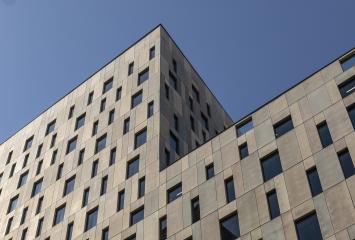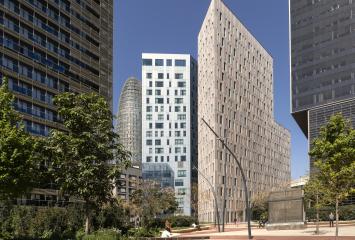Decluttering: what it is and how to apply it to your workspace.
The environment decisively influences people's psychological state. No one is immune to what surrounds them. No one can detach themselves so much that it doesn't affect them in one way or another, everything that defines the space in which they work: the amount of natural light it receives, the beauty of the furniture design, the aesthetics of the walls, or the order of objects. In fact, the latter is so important and can impact individual performance to such an extent that many companies have begun to encourage the practice of decluttering among their teams: it consists of reducing clutter through reduction, elimination, and organization of the material present in the workspace.
Benefits of decluttering for individuals
Compulsive disorder can cloud the mind enough that decision-making is not optimal. Hence, putting decluttering into practice, and getting rid of everything that is not truly useful, opens the door to a better focus on matters and consequently to better decision-making. Everything seems clearer. With fewer visual obstacles in the way. This, furthermore, encourages workers to connect more intensely with their creative side, to achieve greater efficiency in managing their time within the office, and ultimately to become more productive in both quantitative and qualitative terms, which boosts self-esteem.
But the psychological benefits don't end there. Enjoying a visually airy workspace, where everything is in its place, generally results in a reduction in the feeling of stress. Workers find relief in the low material burden in those moments of overwhelm. Additionally, they also experience greater job satisfaction, higher motivation, and, very importantly for their longevity and role in the company, a better professional image. The image of the messy genius is not very effective in professional environments. A minimalist, clean, and performance-oriented environment is more inspiring.
Benefits of decluttering for companies
The human-centric approach we cultivate at Colonial leads us to a recurring idea in our articles: that those elements or practices that increase worker satisfaction ultimately prove to be extremely beneficial for the companies they work for. And in decluttering, there is no exception. After all, how could better decision-making, finer creativity, greater motivation, or higher professional self-esteem not positively impact the company when these are the result of the combined efforts of the people occupying its office? It's impossible.
On the other hand, the company also gains a lot in terms of corporate image, as clients who come to it find an orderly, clear, and uncluttered environment that conveys professionalism and focus. Disorder often generates mistrust. Finally, decluttering, which results in work desks with fewer unnecessary materials, increases the retrieval of documents and relevant information, thereby enhancing operational efficiency and, in some types of companies, facilitating compliance with certain sector-specific or general regulations.
Tips for putting it into practice
The first step to putting decluttering into practice is evaluating the space. What is in it? How much use do the different elements receive? Once this is done, it's time to get rid of anything that doesn't have a clear purpose, keeping only the essential materials such as the computer, keyboard, mouse, lamp, and perhaps some subtle green decoration to satisfy that biophilic element that resides within every human being. However, it's important not to throw away the items you're getting rid of, as recycling or donating them can give them a second life and protect the environment.
Utilizing drawers is also key to visually clearing the desk, as well as digitizing all those documents that need to be kept because they contain relevant information. Additionally, it's advisable to use cable organizers to prevent tangles and project an image of orderliness and hygiene. Regarding personal items, it's advisable to reduce them to preserve only a few details that make the worker feel the space is theirs, but without causing distraction. Being selective in quantity and quality will contribute to a decluttered workspace. A stimulating workspace.

